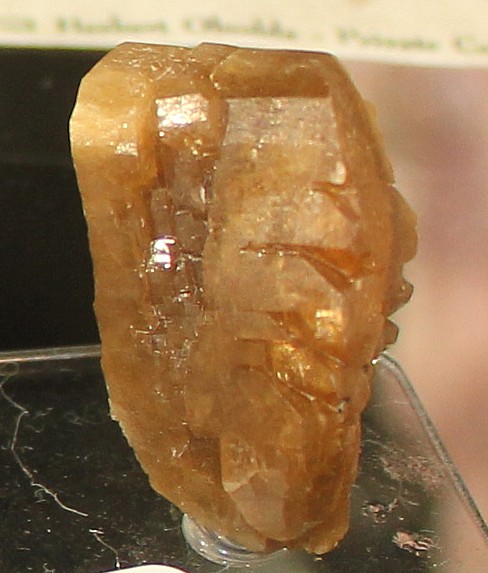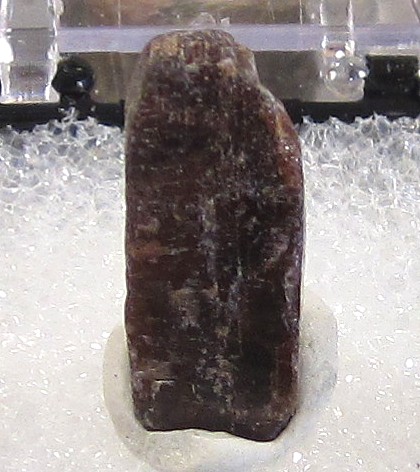|
.
Xenotime Mineral Facts:
Chemical Formula:
YPO4
Yttrium
phosphate. Essentially a yttrium phosphate, but usually contains erbium
and in some cases cerium, various rare earths, silicon and thorium.
Colors:
Yellowish, pink, gray or reddish
brown.
Its streak is a pale
shade of the same color. Xenotime is also dichroic.
Hardness:
4.5
Density: 4.5
to 5.1
Cleavage:
Perfect cleavage on
(100).
Crystallography: Tetragonal
Crystal forms resemble
those of zircon. Its crystals are octahedral or prismatic. Also found in rolled
alluvial grains.
Luster:.
Vitreous to resinous
luster. It is translucent to opaque.
Optics:
(Refractive Index):
=
e= 1.81, w = 1.72
|

Orange Xenotime Crystal |
|
Composition,
Structure and Associated Minerals:
Xenotime is a rare
mineral which occurs, like monazite, as an accessory constituent in granite,
gneiss and pegmatite veins. Found as rolled grains in the stream sands,
particularly in Brazil.
Although xenotime may
contain significant amounts of radioactive elements like thorium or uranium,
however the mineral does not degrade and become metamict like
sphene or
zircon would.
Identification
and Diagnostics
Before the
blowpipe, infusible alone and without fluxes. Xenotime is infusible,
insoluble in acids and with difficulty soluble in molten microcosmic salt.
It is distinguished from
zircon by its cleavage and inferior hardness.
Insoluble in hydrochloric acid. After fusion with sodium carbonate, dissolve
in nitric acid and add solution to excess of ammonium molybdate solution. A
yellow precipitate forms (positive test for the presence of phosphate). A
potential confusion of xenotime with zircon (ZrSiO4),may occur
because of its similar tetragonal crystal structure, its vitreous luster,
and the typical low level radioactivity of both minerals. Xenotime has an
inferior hardness and will give a positive test for phosphates which zircon
will not. A
variety of xenotime containing a small percentage of sulfates is known as
hussakite.
|

Xenotime Crystal |
|
|
Occurrence,
Localities and Origins:
The mineral
occurs in pegmatite veins, as a minor accessory mineral in granites and
crystalline metamorphic rocks. It is also found as a heavy residual mineral
in the sands of streams. It is found in pegmatite veins at Hittero, Moss,
and other places in Norway; at Ytterby, Sweden; in the granites of Minas
Geraes, Brazil, the Khyber area of Pakistan. It is found with the residual
heavy minerals in the placer
gold nugget
washings at Clarksville, Georgia, and many places in North Carolina. It is
also found in pegmatite veins in Alexander County in the same State.
It occurs in schist rocks in Music Valley in southern California and in
Colorado. It is recovered as a minor ore mineral in many heavy sand recovery
operations which are worked primarily for
monazite and other elements in Brazil,
India, South Africa and Australia. It is also recovered as an alluvial heavy
material in association with Malaysian
casseterite tin mining. Xenotime is a minor rare earth
ore mineral, being rich in the heavy lanthanide elements, especially the
even numbered lanthanides. Like monazite, the mineral must be chemically
dissolved to separate the various rare earth elements.
Return to the
Mineral Collectors Information Page
|


